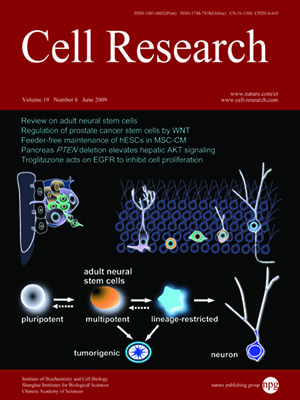
Volume 19, No 6, Jun 2009
ISSN: 1001-0602
EISSN: 1748-7838 2018
impact factor 17.848*
(Clarivate Analytics, 2019)
Volume 19 Issue 6, June 2009: 672-682
REVIEWS
Adult neural stem cells in the mammalian central nervous system
Dengke K Ma1,2,3, Michael A Bonaguidi1,3, Guo-li Ming1,2,3 and Hongjun Song1,2,3
1Institute for Cell Engineering, Johns Hopkins University School of Medicine, 733 N. Broadway, BRB 706, Baltimore, MD 21205, USA
2The Solomon H. Snyder Department of Neuroscience, Johns Hopkins University School of Medicine, 733 N. Broadway, BRB 706, Baltimore, MD 21205, USA
3Department of Neurology, Johns Hopkins University School of Medicine, 733 N. Broadway, BRB 706, Baltimore, MD 21205, USA
Correspondence: Dengke K Ma,(dma2@jhmi.edu )
Neural stem cells (NSCs) are present not only during the embryonic development but also in the adult brain of all mammalian species, including humans. Stem cell niche architecture in vivo enables adult NSCs to continuously generate functional neurons in specific brain regions throughout life. The adult neurogenesis process is subject to dynamic regulation by various physiological, pathological and pharmacological stimuli. Multipotent adult NSCs also appear to be intrinsically plastic, amenable to genetic programing during normal differentiation, and to epigenetic reprograming during de-differentiation into pluripotency. Increasing evidence suggests that adult NSCs significantly contribute to specialized neural functions under physiological and pathological conditions. Fully understanding the biology of adult NSCs will provide crucial insights into both the etiology and potential therapeutic interventions of major brain disorders. Here, we review recent progress on adult NSCs of the mammalian central nervous system, including topics on their identity, niche, function, plasticity, and emerging roles in cancer and regenerative medicine.
Cell Research (2009) 19:672-682. doi: 10.1038/cr.2009.56; published online 12 May 2009
FULL TEXT | PDF
Browse 2270


